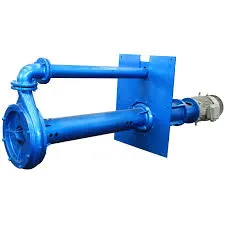Khmer
- Afrikaans
- Albanian
- Amharic
- Arabic
- Armenian
- Azerbaijani
- Basque
- Belarusian
- Bengali
- Bosnian
- Bulgarian
- Catalan
- Cebuano
- Corsican
- Croatian
- Czech
- Danish
- Dutch
- English
- Esperanto
- Estonian
- Finnish
- French
- Frisian
- Galician
- Georgian
- German
- Greek
- Gujarati
- Haitian Creole
- hausa
- hawaiian
- Hebrew
- Hindi
- Miao
- Hungarian
- Icelandic
- igbo
- Indonesian
- irish
- Italian
- Japanese
- Javanese
- Kannada
- kazakh
- Khmer
- Rwandese
- Korean
- Kurdish
- Kyrgyz
- Lao
- Latin
- Latvian
- Lithuanian
- Luxembourgish
- Macedonian
- Malgashi
- Malay
- Malayalam
- Maltese
- Maori
- Marathi
- Mongolian
- Myanmar
- Nepali
- Norwegian
- Norwegian
- Occitan
- Pashto
- Persian
- Polish
- Portuguese
- Punjabi
- Romanian
- Russian
- Samoan
- Scottish Gaelic
- Serbian
- Sesotho
- Shona
- Sindhi
- Sinhala
- Slovak
- Slovenian
- Somali
- Spanish
- Sundanese
- Swahili
- Swedish
- Tagalog
- Tajik
- Tamil
- Tatar
- Telugu
- Thai
- Turkish
- Turkmen
- Ukrainian
- Urdu
- Uighur
- Uzbek
- Vietnamese
- Welsh
- Bantu
- Yiddish
- Yoruba
- Zulu
Telephone: +86 13120555503
Email: frank@cypump.com
ធ្នូ . 11, 2024 19:26 Back to list
ejector pit and pump
Ejector Pit and Pump A Comprehensive Overview
Ejector pits and pumps play an essential role in water management systems, particularly in industries and wastewater treatment facilities. They are designed to move fluids from lower elevation areas to higher ones, ensuring efficient water removal and preventing flooding or contamination. This article delves into the functions, mechanisms, and importance of ejector pits and pumps in various applications.
Understanding Ejector Pits
An ejector pit, sometimes referred to as a sump pit, is a basin or reservoir used to collect excess water or sewage. Its primary purpose is to gather water from surrounding areas and channel it to a pump for further management. Ejector pits are commonly found in basements, plumbing systems, and industrial sites where water drainage is crucial.
The design of an ejector pit typically includes a sump, which is a waterproof structure that collects liquids. This sump can vary in size and depth, depending on the volume of water it needs to handle. The configuration usually includes a float switch that activates the pump when the water reaches a certain level, ensuring efficient operation.
The Role of Pumps
Pumps connected to ejector pits are pivotal in the fluid management process. These pumps are designed to lift water or sewage from the pit to a discharge point, which may be a municipal sewer line, a drainage field, or another treatment system. Ejector pumps come in various types, including submersible pumps, which are installed directly in the ejector pit, and pedestal pumps, which are positioned above the pit.
Working Mechanism When water accumulates in the ejector pit, the float switch rises, signaling the pump to activate. In the case of submersible pumps, the motor and pump assembly are submerged in the water, promoting efficient operation and minimizing the risk of clogging. Once the pump starts, it impels the water upwards through a discharge pipe, often leveraging centrifugal force to maintain a consistent flow rate.
Applications of Ejector Pits and Pumps
Ejector pits and pumps have a wide range of applications across different sectors
ejector pit and pump

1. Residential Use In homes, ejector pits are commonly used in lower-level basements to prevent flooding. In regions prone to heavy rainfall, these systems ensure that accumulated water is pumped away effectively.
2. Commercial Buildings Many commercial properties use ejector pumps to manage wastewater and excess stormwater. This is especially vital in establishments like restaurants and laundromats, where the volume of waste can quickly exceed manageable levels.
3. Industrial Applications In many manufacturing and industrial settings, ejector pits are used to handle process water and prevent contamination. Industries often require sophisticated systems to manage both clean and dirty water, making ejector pumps especially valuable.
4. Wastewater Treatment Plants Ejector pumps are crucial in wastewater facilities, where they transport sewage and other waste products to treatment processes. This ensures the treatment plant can operate efficiently, removing pollutants before discharging water back into the environment.
Importance of Ejector Pits and Pumps
The significance of ejector pits and pumps cannot be overstated. They serve not only as a preventative measure against flooding but also protect public health and the environment by ensuring proper waste removal. Regular maintenance and timely upgrades of these systems are critical to their effectiveness, minimizing the risk of failures that could lead to hazardous spills or backups.
Moreover, improvements in pump technology, such as energy-efficient motors and automated control systems, have enhanced the performance of ejector pumps. These advancements result in lower energy consumption, reduced operational costs, and increased reliability.
Conclusion
In summary, ejector pits and pumps are vital components of modern water management systems. Their ability to handle excess water, manage sewage, and protect infrastructure highlights their significance across various applications. Understanding their operation and maintenance is crucial for ensuring the efficiency and sustainability of our water management practices, ultimately leading to safer and cleaner environments.
-
Custom Drilling Mud and Slurry Pump Supplier - High Efficiency, Tailored Solutions
NewsJun.10,2025
-
Supply Vertical Submersible Sewage Pump High-Efficiency WQ/QW Pumps Supplier
NewsJun.10,2025
-
Premium Sewage Ejection System & Pumps Efficient Waste Removal
NewsJun.09,2025
-
Premium Wholesale Slurry Pump Impellers Durable & Efficient Slurry Handling
NewsJun.09,2025
-
Top Sewage Pump Companies Durable Industrial Solutions for Efficiency
NewsJun.09,2025
-
Heavy Duty Slurry Pumps - OEM High Performance & Bulk Wholesale
NewsJun.09,2025










